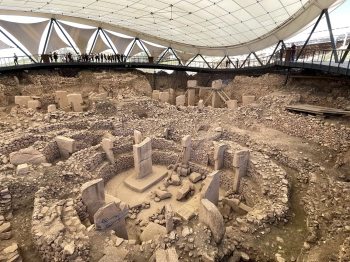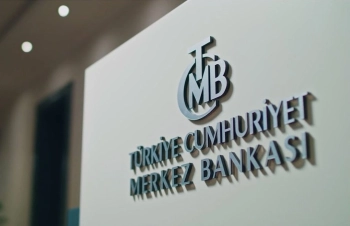The Rising Trend of Fractional Land Investment: A Modern Real Estate Strategy
What if you could invest in prime real estate without needing millions in capital? Why are savvy investors increasingly turning to fractional ownership models? How can partial land ownership provide substantial returns in today's volatile market? These questions are at the heart of one of real estate's most intriguing emerging trends: fractional land investment, which is experiencing significant growth in Turkey and beyond.
Understanding Fractional Land Investment
Fractional land investment, known as hisseli arsa in Turkish, represents a revolutionary approach to real estate ownership. This model allows multiple investors to collectively purchase a parcel of land, each holding a defined percentage of ownership. Unlike traditional joint ownership structures, fractional investments are typically managed through formal agreements that clearly outline rights, responsibilities, and exit strategies for each participant.
The concept has gained remarkable traction in Turkey's real estate market, particularly in developing regions and areas earmarked for future infrastructure projects. Investors can acquire shares ranging from minor percentages to substantial portions of a property, making real estate investment accessible to those with limited capital. The legal framework in Turkey supports this model through the Land Registry Law (Tapu Kanunu), which allows for shared ownership registration with precise percentage allocations.
Consider a practical example: A 5,000 square meter plot on the outskirts of Istanbul is priced at $500,000. Through fractional ownership, twenty investors could each purchase a 5% share for $25,000 plus associated fees. This structure democratizes access to premium real estate opportunities that would otherwise require significant capital outlay.
Why Fractional Land Investment is Gaining Popularity
The surge in fractional land investment stems from several converging economic factors. First, traditional investment vehicles like stocks and bonds have shown increased volatility, while bank interest rates often fail to outpace inflation. Real estate, particularly land, has historically maintained value appreciation that surpasses inflation rates in growing economies.
Second, urbanization trends in Turkey have created substantial demand for developable land. Major infrastructure projects including the Istanbul Canal, new airport developments, and transportation expansions have increased the value of strategically located parcels. Fractional ownership allows investors to participate in this appreciation without the barriers of full ownership.
Third, the demographic shift toward collaborative consumption models—evident in everything from car sharing to vacation property timeshares—has normalized fractional ownership concepts. Modern investors, particularly younger demographics, show greater comfort with shared ownership structures that offer flexibility and reduced risk exposure.
Financial Advantages and Return Potential
Fractional land investments offer distinct financial benefits that differentiate them from other real estate approaches. The primary advantage is leveraged appreciation—investors benefit from the full percentage of value increase on the entire property proportional to their ownership share, despite only committing a fraction of the total capital.
Additionally, land investments typically involve lower carrying costs compared to developed properties. Without structures to maintain, insure, or repair, investors face minimal ongoing expenses beyond property taxes and possible management fees. This cost efficiency enhances overall return on investment.
Consider the financial trajectory of a fractional investment in Antalya: In 2020, a group of ten investors purchased a coastal plot for $300,000 ($30,000 each). By 2023, infrastructure improvements and tourism development increased the property's value to $450,000—a 50% appreciation. Each investor's share grew to $45,000, representing a $15,000 gain on their initial investment without additional capital requirements.
Risk Management in Shared Land Ownership
While fractional investment offers significant advantages, it also presents unique risks that require careful management. The foremost concern involves decision-making alignment among co-owners regarding development, sale timing, or additional investment requirements. Professional fractional investment platforms mitigate this risk through comprehensive shareholder agreements that establish clear procedures for major decisions.
Market timing risk represents another consideration. Land values can fluctuate based on zoning changes, infrastructure developments, and economic conditions. Diversification across multiple properties and locations helps mitigate this exposure. Additionally, investors should consider liquidity constraints—while some platforms offer secondary markets for trading shares, land investments generally require longer holding periods than more liquid assets.
Legal due diligence is paramount. Investors must verify clear title ownership, absence of liens or encumbrances, zoning regulations, and development restrictions. Reputable fractional investment providers conduct this due diligence proactively and provide transparent documentation to participants.
The Turkish Market: Opportunities and Considerations
Turkey's unique position bridging Europe and Asia creates distinctive opportunities for land investors. Government incentives for development, growing tourism infrastructure, and population expansion contribute to increasing land values in strategic locations. Particular opportunities exist in:
- Coastal regions: Antalya, Muğla, and Izmir benefit from tourism growth
- Urban expansion zones: Outskirts of major cities where infrastructure extends
- Transportation corridors: Areas near new highway, rail, and airport projects
Foreign investors shouldunderstand regulations regarding property ownership which vary based on nationality and property location. While generally welcoming to foreign investment, Turkey maintains some restrictions on agricultural land and military zones. Working with established fractional investment platforms ensures compliance with these regulations.
Currency considerations also play a role. While property is priced in Turkish Lira, foreign investors must account for exchange rate fluctuations between their home currency and the Lira. Some investment platforms offer currency hedging options to manage this exposure.
Practical Steps to Fractional Land Investment
Entering the fractional land market requires a structured approach. First, prospective investors should assess their financial capacity and investment horizon. Land investments typically require a three-to-seven-year horizon to realise substantial appreciation.
Next, research reputable fractional investment platforms or real estate groups specialising in shared ownership models. Key evaluation criteria should include:
- Track record of completed projects and investor returns
- Transparency regarding fees, legal structure, and property selection
- Clarity of exit strategies and secondary market options
- Professional management team with real estate expertise
Once selecting a platform, investors should carefully review the property documentation, including valuation reports, legal due diligence, and development potential assessments. Consultation with a local real estate attorney is advisable, particularly for international investors.
Finally, investors should diversify across multiple properties rather than concentrating investment in a single parcel. This approach mitigates specific property risks and provides exposure to different market segments and geographic areas.






